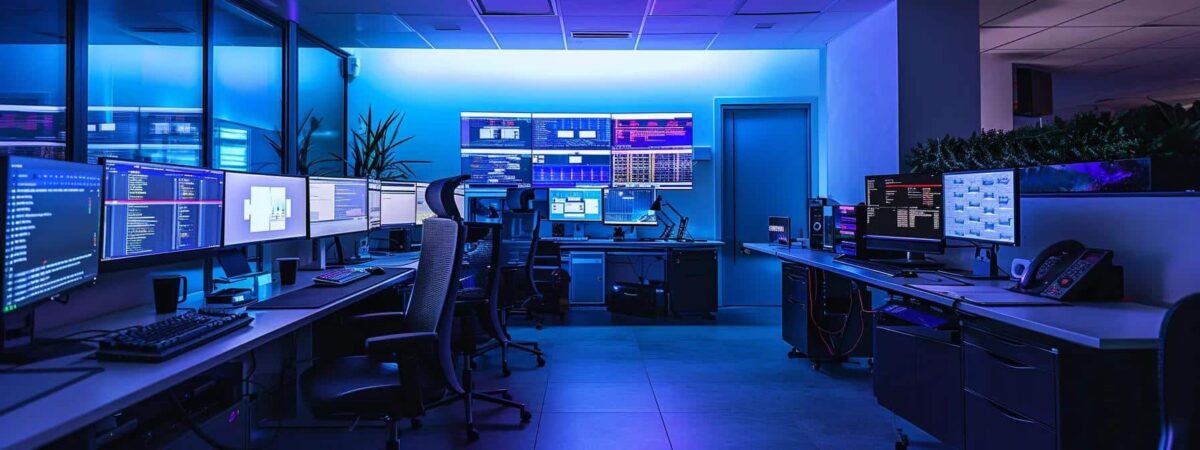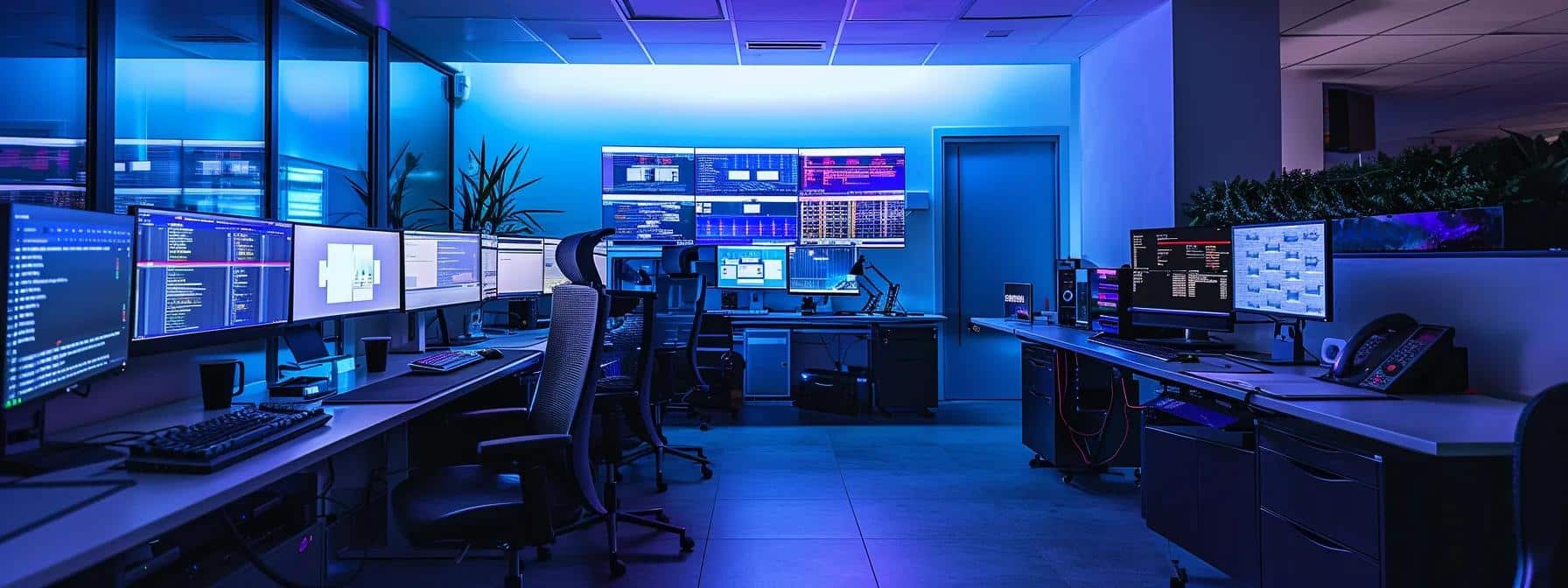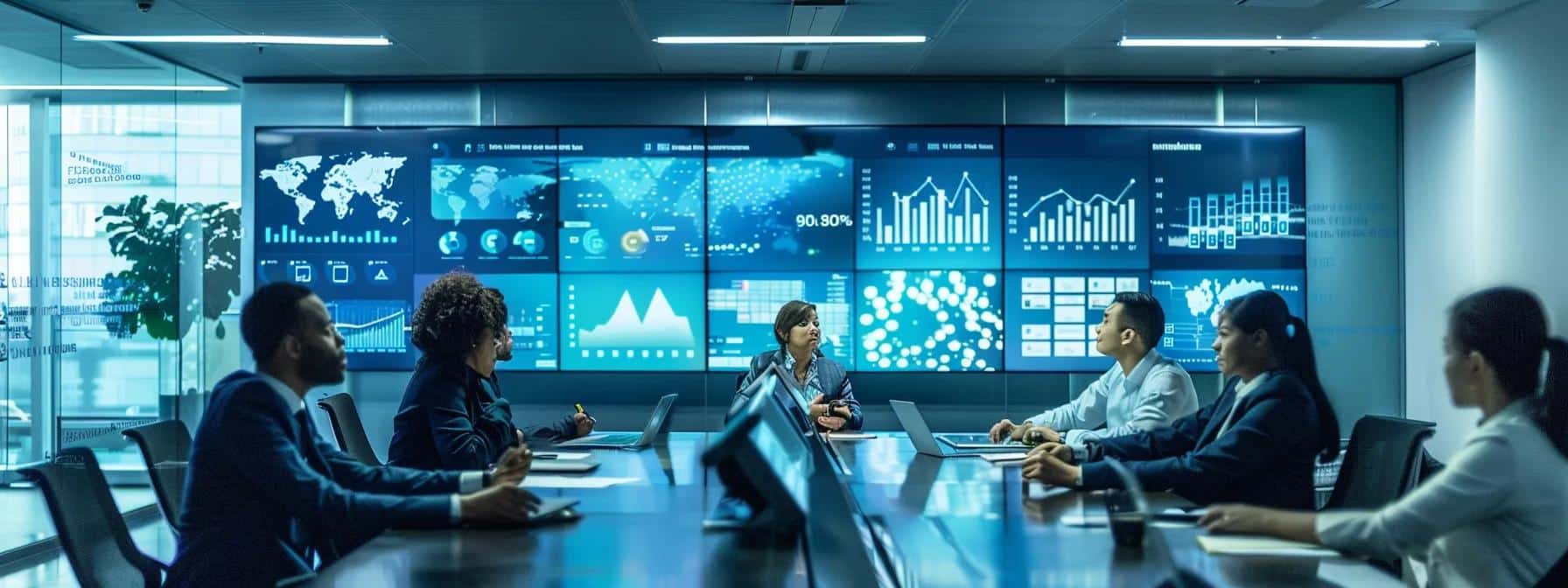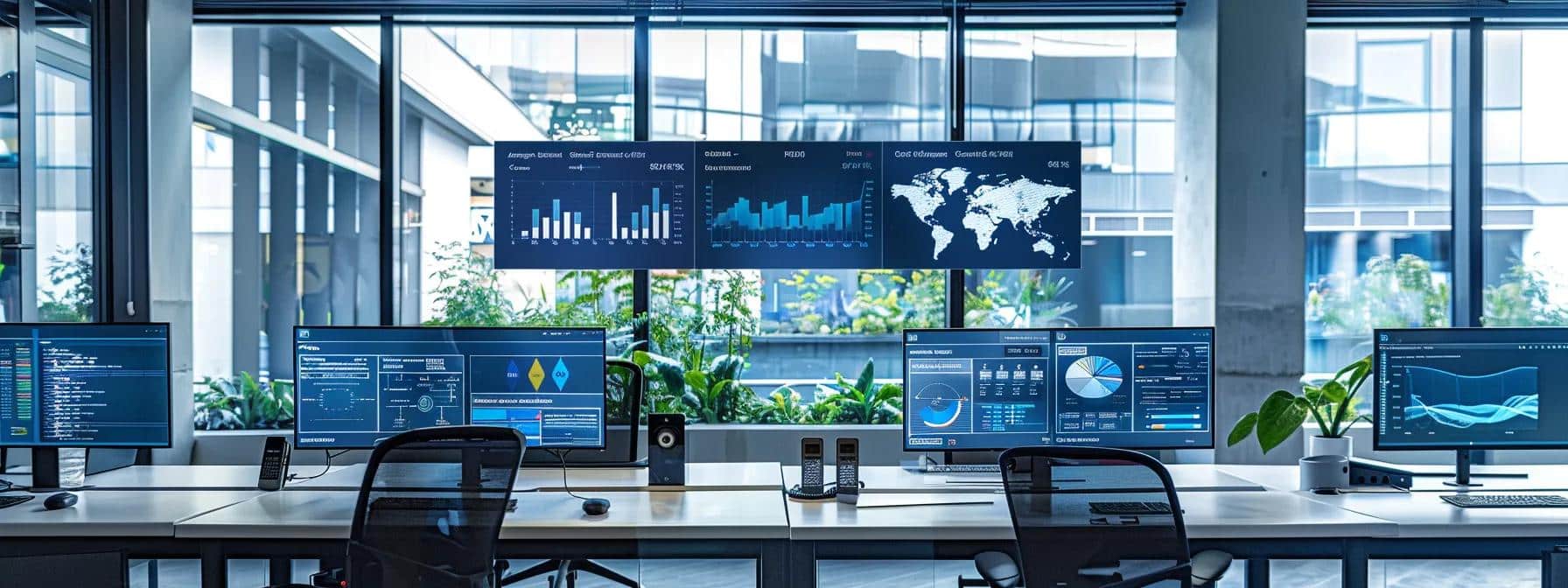Strategies for Securing Remote Workforces With VPN & MFA

Strategies for Securing Remote Workforces With VPN & MFA

Table Of Contents:
- What Are the Essential Security Measures for Remote Workforces?
- How Can Businesses Implement VPN Solutions Effectively for Remote Teams?
- What Are the Benefits and Challenges of Multi-Factor Authentication for Remote Workers?
- How Does Security Awareness Training Strengthen Remote Workforce Defense?
- How Can Businesses Ensure Compliance While Securing Remote Workforces?
- What Are Advanced Security Strategies Beyond VPN and MFA for Remote Workforces?
- How Can Businesses Scale Remote Workforce Security as They Grow?
- Detailed Lists
- Comparative Table: Cybersecurity Solutions for Remote Workforces
- Frequently Asked Questions
In today’s rapidly evolving digital landscape, cybersecurity services for business is a critical pillar for businesses, especially those transitioning to or expanding remote workforces. As companies strive to maintain productivity and operational continuity, safeguarding digital assets and sensitive data from diverse cyber threats is paramount. Many organizations are increasingly partnering with an it service provider to enhance their defenses. This article examines advanced cybersecurity measures designed specifically for remote teams, often implemented in collaboration with an it service provider. It covers proven practices such as Virtual Private Network (VPN) solutions, Multi-Factor Authentication (MFA), endpoint security, and additional proactive strategies that an it service provider might recommend. Through an analysis backed by industry best practices and detailed comparisons, the article offers IT executives actionable insights. It illustrates how integrating these measures, often with the expertise of an it service provider, mitigates risk, strengthens security posture, ensures regulatory compliance, and optimizes network efficiency.
The challenges in securing a remote workforce stem from decentralized work environments, an increased number of endpoints, and insecure home networks. Modern threats like ransomware, phishing, and insider attacks require a multi-layered approach beyond traditional firewalls and antivirus software. For instance, VPNs secure data transmission over public networks while MFA adds another verification layer, and endpoint security protects individual devices. Together with robust security awareness training and compliance protocols, these strategies create a resilient defense against evolving cyber threats. The following sections detail how businesses can integrate and manage these advanced measures.
What Are the Essential Security Measures for Remote Workforces?
A holistic approach to securing remote workforces uses multiple layers of cyber defenses. Key measures include using VPNs to secure data in transit, deploying MFA to prevent unauthorized access, and implementing stringent endpoint security. These practices work together to protect sensitive business data, thwart cyberattacks, and maintain a secure digital workspace even when employees work off-site.
Robust network security requires a comprehensive framework that includes advanced threat detection, secure access protocols, and continuous monitoring. Businesses increasingly rely on cloud-based security solutions for centralized management of distributed endpoints. Centralized cybersecurity policies reduce remote-work risks. For example, VPNs secure data channels between remote employees and corporate servers, reducing interception risk, while MFA requires a secondary authentication factor to prevent unauthorized access—even if credentials are stolen. Endpoint security acts as a barrier against malware, ransomware, and zero-day attacks, and helps organizations maintain compliance with standards like GDPR, HIPAA, and PCI-DSS.
Advanced monitoring tools provide continuous oversight of network activity, enabling early anomaly detection. Proactive threat management through regular vulnerability assessments and penetration testing ensures any security weaknesses are promptly addressed, allowing companies to adapt dynamically to new threats.
How Can Businesses Implement VPN Solutions Effectively for Remote Teams?

Effective VPN solutions are a cornerstone for securing remote work environments by protecting data transmitted over the internet from interception and cyberattacks. The first step is selecting a trusted vendor offering robust encryption, reliable uptime, and compatibility with various operating systems and devices. VPN deployment should address bandwidth needs and geographic considerations to ensure low latency and reliable connections.
What Are the Best Practices for VPN Deployment and Management?
Adopting best practices is crucial for secure, efficient remote access. Businesses should enforce strict access policies—using role-based access controls and regularly updating permissions—to ensure only authorized users connect via VPN. Regular software updates and patch management protect against vulnerabilities in VPN protocols and encryption algorithms. Configuring split tunneling, based on whether localized resources or full internet traffic is needed, helps manage bandwidth efficiently while keeping critical operations secure.
Centralized management software enables IT administrators to monitor VPN connections in real time, detect unusual activity, and proactively disable compromised credentials. Integrating VPN solutions with existing Identity and Access Management (IAM) frameworks provides seamless, secure authentication. Monitoring performance indicators such as connection speed, uptime, and user access logs helps businesses address issues promptly. A study in 2023 indicated that centralized VPN management can reduce downtime and boost remote workforce productivity.
Which VPN Software Options Are Most Trusted for Business Use?
Reputable VPN software includes Cisco AnyConnect, Fortinet FortiClient, and Palo Alto GlobalProtect. Each offers key features such as dynamic encryption standards, integrated threat detection, and user-friendly interfaces. Cisco AnyConnect integrates seamlessly with existing infrastructures, while Fortinet FortiClient is favored for its integration with Fortinet’s broader security ecosystem. Palo Alto GlobalProtect provides sophisticated endpoint protection alongside VPN capabilities.
The comparative table below evaluates top VPN solutions on encryption strength, scalability, ease of management, and compatibility:
Businesses should trial these options to ensure they meet performance and security needs, taking into account team size, geographic distribution, vendor support quality, total cost of ownership, and future scalability.
What Are the Benefits and Challenges of Multi-Factor Authentication for Remote Workers?
Multi-Factor Authentication (MFA) elevates remote workforce security by adding extra layers of verification beyond a conventional password. MFA mitigates unauthorized access and helps ensure compliance with industry standards. It uses a combination of what the user knows (a password), what the user has (a security token or smartphone), and what the user is (biometric data), making it exponentially harder for attackers to breach systems even if one factor is compromised.
MFA deters phishing, credential stuffing, and brute force attacks. By integrating MFA with VPN solutions, businesses ensure that even if login credentials are stolen, additional authentication prevents access. However, MFA can face challenges such as user resistance, increased onboarding complexity, and compatibility issues with legacy systems. Studies have shown MFA can reduce account takeover incidents dramatically.
Balancing robust security with usability is essential. Enhancements like push notifications and biometric options have improved user experience. It is vital for IT departments to ensure that MFA systems remain robust yet user-friendly, supported by comprehensive employee training and ongoing technical support.
How Does MFA Enhance Security Beyond Passwords?
MFA extends security beyond passwords by requiring multiple verification methods, significantly lowering the risk of compromise. For example, combining a password with a one-time code sent to a mobile device makes it extremely difficult for attackers to gain access without physical possession of the device. Biometric verification further reduces risk by using unique physical characteristics. This layered approach supports regulatory compliance and strengthens overall risk management, enhancing customer trust and market reputation.
What MFA Methods Are Most User-Friendly and Secure?
Several MFA methods offer both robust security and user-friendliness. Common methods include:
- SMS-based OTP (One-Time Passwords): Simplest form but susceptible to SIM swapping.
- Authenticator Apps: Generate time-sensitive codes without requiring an internet connection.
- Push Notification Systems: Send prompts to registered devices for immediate approval.
- Biometric Verification: Uses fingerprints or facial recognition for fast, secure access.
- Hardware Tokens: Generate secure codes but may be less convenient.
- Email-based OTPs: Easier to use but less secure.
- Adaptive Authentication: Leverages behavioral analytics to reduce unnecessary verification prompts.
Businesses should choose methods that balance security with minimal workflow disruption.
How to Overcome Common MFA Implementation Challenges?
Overcoming MFA challenges requires a comprehensive strategy emphasizing user training, gradual rollout, and robust technical support. Organizations should conduct in-depth onboarding sessions that detail MFA benefits and proper usage. Pilot testing with a small group can help identify technical hurdles and gather feedback. Ensuring compatibility with legacy systems is critical; IT administrators must work closely with vendors to integrate new solutions smoothly. Ongoing monitoring, helpdesk support, and periodic refresher training can help maintain user confidence and system integrity. Establishing feedback loops further aids in refining MFA processes.
How Does Security Awareness Training Strengthen Remote Workforce Defense?

Security awareness training empowers employees to become the first line of defense against cyber threats. It strengthens a remote workforce by instilling best practices for identifying, reporting, and preventing breaches. Such training transforms vulnerable employees into active participants in an organization’s cybersecurity strategy.
Effective programs tailor content to challenges specific to remote work, educating employees to recognize phishing attempts, manage passwords securely, handle sensitive information safely, and keep software updated. Regular simulated phishing tests and interactive exercises reinforce learning and help reduce the risk of falling for scam advertisements.
Furthermore, security awareness training covers the proper use of VPNs, MFA, and endpoint security, offering a holistic approach to cybersecurity. Emphasizing the legal and financial repercussions of data breaches encourages employees to adopt best practices. Continual education is crucial as cyber threats evolve rapidly—regular training sessions help maintain a proactive security culture.
What Topics Should Security Training Cover for Remote Employees?
Training should cover: – Fundamental cybersecurity principles including password management, VPN usage, and MFA. – How to identify social engineering tactics notably phishing, pretexting, and baiting. – Detailed explanations of various malware types (ransomware, viruses, spyware) and prevention measures. – Secure handling of sensitive data and best practices for remote connectivity. – Physical security measures for devices and compliance-related topics. – Procedures for reporting security incidents promptly.
How Often Should Businesses Conduct Security Awareness Programs?
Businesses should conduct comprehensive security training at least quarterly, supplemented by monthly or weekly micro-training sessions. Frequent training ensures employees remain current with evolving threats and reinforces security protocols. Continuous training has been shown to improve vigilance and response times, contributing to an overall shift toward a security-first culture.
What Are Effective Methods to Engage Remote Workers in Security Training?
Engaging remote workers requires interactive methods that promote active participation. Gamification elements such as quizzes, points, and badges for detecting phishing attempts can boost engagement. Interactive webinars, live training sessions, and real-world case studies foster communication and understanding. Microlearning modules, short and focused training sessions, and a mix of videos, infographics, and role-playing exercises cater to varied learning styles. Regular feedback through surveys and discussion forums further tailors training to employee needs.
How Can Businesses Ensure Compliance While Securing Remote Workforces?
Compliance is vital in any cybersecurity strategy, especially for organizations managing remote teams across different jurisdictions. Ensuring compliance involves implementing security measures—such as VPNs, MFA, and strict endpoint security—in line with industry standards and regulations. These solutions streamline policy enforcement and reduce data breach risks that could lead to costly fines.
Organizations must adhere to standards like GDPR, HIPAA, and PCI-DSS. Regular audits, risk assessments, and updates to cybersecurity practices help maintain compliance. VPNs and MFA support compliance by restricting access to authorized personnel and providing detailed audit trails through logs and access records. Collaborating with cybersecurity experts and leveraging automated compliance management tools further ensures adherence to regulatory requirements.
Which Industry Standards and Regulations Apply to Remote Workforce Security?
Businesses should comply with globally recognized standards such as GDPR, HIPAA, and PCI-DSS, along with frameworks like ISO/IEC 27001. These guidelines outline requirements for access control, data encryption, incident response, and auditing processes. Companies operating internationally must also consider local data protection laws, ensuring a consistent security level across all systems.
How Do VPN and MFA Solutions Help Meet Compliance Requirements?
VPN and MFA solutions are integral to meeting compliance in remote work. VPNs encrypt data transmitted over networks—mandated under regulations like GDPR and HIPAA—while MFA enforces stringent authentication protocols, creating an auditable security layer. Detailed access logs and automated reports generated by these tools are crucial during audits, demonstrating due diligence in data protection and reducing compliance-related disruptions.
What Are the Risks of Non-Compliance in Remote Work Security?
Non-compliance can lead to severe consequences including financial penalties, reputational damage, and legal issues. Breaches expose sensitive information, compromising customer trust and operational continuity. Beyond direct financial losses, non-compliance can hinder business growth by restricting access to key markets and contracts, leading to operational interruptions and costly remediation efforts. A proactive compliance strategy that integrates modern cybersecurity measures is essential for sustaining business viability.
What Are Advanced Security Strategies Beyond VPN and MFA for Remote Workforces?

Beyond foundational VPN and MFA strategies, advanced security measures are essential to defend against sophisticated cyber threats. Proactive threat management, continuous monitoring, and Endpoint Detection and Response (EDR) extend security capabilities by not only preventing intrusions but also enabling rapid detection and response to emerging anomalies. These advanced solutions often use machine learning and behavioral analytics to provide early warnings of potential breaches.
Proactive threat management involves regular vulnerability assessments, threat intelligence analysis, and red team exercises to test defenses. Combined with continuous monitoring, these practices reduce the mean time to detect and respond to threats. EDR platforms provide real-time analysis and automated incident response, collecting forensic data to assess breaches and inform remediation efforts.
Advanced strategies integrate multiple technologies into a layered cybersecurity framework that strengthens resilience against zero-day attacks, insider threats, and advanced persistent threats (APTs). A unified Security Operations Center (SOC) can centralize incident response and streamline communication, ensuring effective management of all security events.
How Does Proactive Threat Management Protect Remote Employees?
Proactive threat management protects remote employees by continuously monitoring network activities, conducting regular security audits, and performing vulnerability assessments. Automated tools using machine learning can quickly detect unusual behavior and potential indicators of compromise, allowing IT teams to neutralize threats promptly. This anticipatory approach reduces exposure time and minimizes damage from emerging cyber threats.
What Is the Role of Continuous Monitoring and Incident Response?
Continuous monitoring involves the vigilant tracking of network traffic, device behavior, and user activities across endpoints. Sophisticated SIEM systems help IT departments quickly identify anomalies and reduce response times to threats. When combined with an effective incident response plan—which includes predefined procedures, clear communication channels, and designated roles—continuous monitoring ensures swift containment and resolution of security incidents, minimizing operational disruption.
How Can Endpoint Detection and Response (EDR) Enhance Remote Security?
EDR enhances remote security by offering detailed visibility into endpoint activities, allowing organizations to identify and remediate malicious behavior swiftly. Advanced analytics and pattern recognition minimize false positives while ensuring genuine threats are flagged. EDR systems enable automated forensic analysis and incident response, isolating compromised endpoints and rapidly initiating remedial actions such as patching or reimaging. Integration with cloud-based threat intelligence further reduces the time required to detect and mitigate attacks.
How Can Businesses Scale Remote Workforce Security as They Grow?
Scaling remote workforce security requires strategies that meet current needs while anticipating future growth. As remote teams expand, it is essential to implement scalable security solutions that maintain a consistent security posture without significantly increasing management overhead. This can be achieved by employing flexible technologies that adapt to dynamic workloads, integrating automation, and ensuring expert support.
The scalability of VPN and MFA platforms, along with advanced monitoring and EDR solutions, is vital for extending protection. Cloud-based security services offer flexible resource allocation and pay-as-you-go models, aligning security investments with business expansion. Centralizing security management through a unified SOC enables efficient monitoring, analysis, and rapid response across all remote endpoints.
Businesses must also cultivate a strong security culture through regular training and adaptable policies that evolve with the threat landscape. Strategic vendor partnerships and investments in automation tools further streamline security management as organizations grow.
What Security Solutions Adapt to Expanding Remote Teams?
Solutions that adapt to expanding remote teams are characterized by flexibility, interoperability, and centralized management. Cloud-based VPN services offer scalable bandwidth and dynamic resource allocation that guarantee secure connectivity regardless of team size. Similarly, MFA solutions with adaptive authentication adjust based on real-time risk assessments, ensuring security without compromising usability. Endpoint Detection and Response (EDR) tools deployed in cloud-enabled architectures can scale seamlessly as new endpoints are added, while unified threat management systems combine firewall, intrusion detection, and automation for a consistent security standard.
How Does Expert Support Facilitate Scalable Security Management?
Expert support is critical for scalable security management. Outsourcing cybersecurity management to specialized providers or managed security service providers (MSSPs) allows businesses to leverage advanced security tools and industry expertise without overburdening internal teams. Expert partners can streamline the integration of VPN, MFA, endpoint security, and advanced threat detection systems, offer continuous monitoring and incident response, and provide regular system updates. Their guidance in interpreting threat intelligence and developing tailored defense strategies is invaluable as organizations scale.
What Are Cost-Effective Strategies for Growing Businesses?
Cost-effective strategies include adopting scalable, cloud-based security solutions and engaging expert managed services. Instead of heavy investments in on-premises hardware, small and mid-sized businesses can use subscription-based security services that scale with usage and include regular updates and support. A hybrid approach—combining in-house security capabilities with outsourced expertise—minimizes additional personnel costs. Partnerships with vendors that offer bundled solutions and flexible pricing models further help control expenses while maintaining high security standards.
Detailed Lists
Below are four detailed lists presenting actionable insights on various cybersecurity components for remote workforce protection.
List 1: Key Elements of a Robust VPN Strategy
- Encryption Protocols – Advanced Security: Use AES-256 encryption to keep VPN data confidential and inaccessible to malicious actors.
- Access Controls – Restricted User Permissions: Implement role-based access to ensure only authorized personnel access sensitive information.
- Scalability – Dynamic Resource Allocation: Choose VPN solutions that offer scalable bandwidth for growing remote teams.
- Centralized Management – Unified Dashboard: Utilize centralized tools to monitor and update VPN configurations in real time.
- Regular Audits – Continuous Compliance Checks: Conduct routine audits and vulnerability assessments to ensure compliance with industry standards.
- User Education – Training on Best Practices: Educate employees on secure VPN usage to minimize user-induced vulnerabilities.
- Redundancy and Failover – Uninterrupted Connectivity: Ensure VPNs include redundancy measures to maintain operations during high traffic or failures.
List 2: Effective MFA Deployment Strategies for Remote Employees
- User-Friendly Methods – Balancing Security and Convenience: Deploy authenticator apps and push notifications to offer ease of use.
- Integration with Existing Systems – Seamless Compatibility: Ensure MFA integrates with current IAM systems and legacy applications.
- Adaptive Authentication – Context-Based Verification: Use behavioral analytics to adjust verification based on risk context.
- Training and Support – Building User Confidence: Provide comprehensive training and support channels for MFA usage.
- Regular Updates – Maintaining System Integrity: Schedule regular software updates and security patches.
- Feedback Mechanisms – Continuous Improvement: Establish feedback loops to refine MFA systems based on user input.
- Backup Methods – Alternate Verification Options: Offer backup codes or secondary options to prevent lockouts during outages.
List 3: Core Topics for Remote Workforce Security Training
- Phishing Awareness – Identifying Social Engineering Attacks: Train on detecting phishing via email authenticity and sender verification.
- Secure Password Practices – Enhancing Credential Protection: Emphasize the importance of strong, unique passwords and password managers.
- VPN Usage – Best Practices for Secure Connectivity: Instruct on safe VPN usage and avoiding public Wi-Fi without secure connections.
- MFA Protocols – Steps for Multi-Factor Authentication: Explain MFA processes and the critical role of each verification factor.
- Endpoint Security – Protecting Devices from Malware: Stress keeping devices updated, using antivirus tools, and enabling firewalls.
- Data Handling and Storage – Best Practices for Sensitive Information: Train on secure handling, storage, and transmission of confidential data.
- Incident Reporting – Quick Response to Security Incidents: Establish clear protocols for fast reporting and remediation of security incidents.
List 4: Advanced Strategies for Endpoint Detection and Response (EDR)
- Real-Time Monitoring – Immediate Threat Detection: Deploy EDR systems that continuously monitor endpoint activities.
- Machine Learning Algorithms – Analyzing Behavioral Patterns: Use ML to distinguish between normal usage and potential threats.
- Automated Incident Response – Rapid Containment: Enable automated responses to isolate compromised endpoints quickly.
- Centralized Data Collection – Forensic Analysis Lead: Continuously log endpoint data for in-depth forensic analysis.
- Integration with SIEM – Enhanced Alerting and Reporting: Ensure seamless integration with SIEM systems for unified incident reporting.
- User Behavior Analytics – Detecting Insider Threats: Utilize UEBA to identify unusual user activities that may indicate insider threats.
- Regular Patch Management – Preventive Maintenance: Schedule regular updates to close gaps and mitigate vulnerabilities.
Comparative Table: Cybersecurity Solutions for Remote Workforces
Before diving into detailed FAQs, the table below summarizes critical cybersecurity solutions based on key attributes:
Frequently Asked Questions
Q: What Makes VPN Solutions Essential for Remote Work Security? A: VPN solutions are critical because they encrypt communication between remote employees and corporate networks to prevent interception of sensitive data. They also allow secure access to internal resources and, when integrated with centralized management tools, provide real-time visibility into network traffic for proactive threat detection.
Q: How Does Multi-Factor Authentication Enhance Cybersecurity for Remote Teams? A: MFA enhances cybersecurity by adding extra verification layers beyond passwords. This means that even if credentials are compromised, additional factors such as OTPs, biometrics, or push notifications prevent unauthorized access. MFA has been shown to significantly reduce account takeover incidents, forming an essential part of a robust security framework.
Q: Why Are Continuous Monitoring and EDR Important for Protecting Remote Endpoints? A: Continuous monitoring and EDR provide real-time insights into endpoint activities. Continuous monitoring quickly detects anomalies, while EDR collects forensic data to analyze and respond to threats, reducing the average time to detect and remediate cyberattacks and thereby minimizing damage.
Q: What Role Does Security Awareness Training Play in Preventing Cyberattacks? A: Security awareness training educates employees on best practices and common threats such as phishing, malware, and social engineering. Well-informed employees are better able to recognize and respond to potential threats, substantially reducing the risk of successful cyberattacks.
Q: How Can Businesses Balance Cost and Security When Scaling Remote Workforces? A: Balancing cost and security involves using scalable, cloud-based security solutions and managed services to minimize upfront costs while providing continuous support, combined with a hybrid approach that leverages both in-house expertise and outsourced resources.
Q: What Are the Key Compliance Challenges in Securing Remote Workforces, and How Can They Be Addressed? A: Key challenges include adhering to standards such as GDPR, HIPAA, and PCI-DSS while managing a decentralized workforce. These challenges are met by integrating VPNs, MFA, and endpoint security with regular audits and detailed logging to provide audit trails for regulatory inspections. Expert consultancy and automated compliance tools further assist in maintaining compliance.
Q: What Future Trends Are Expected in Cybersecurity for Remote Workforces? A: Future trends include increased automation, advanced behavioral analytics, and the expanded use of artificial intelligence for threat prediction and response. As cyber threats evolve, businesses will continue to adopt layered security approaches with real-time monitoring, adaptive authentication, and enhanced endpoint protection tailored for distributed work environments.

